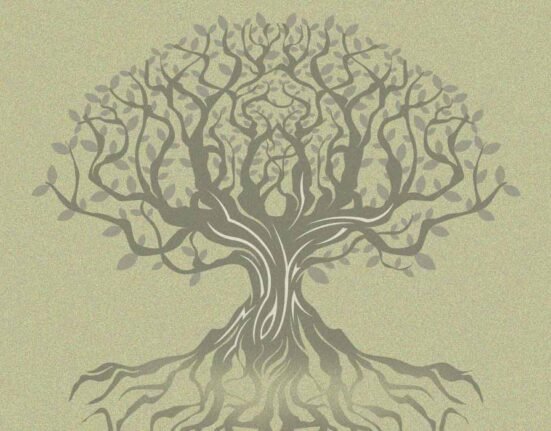We live in an increasingly interconnected world where information spreads like wildfire, and the media often dictates narratives. Social media has played a huge role in the spread of mental health awareness. This accessibility to social media has had many advantages, one of which is that people now have an open platform and a safe space to connect and talk. But, it doesn’t come without disadvantages, because of the open space for conversations, people sometimes embrace certain stereotypes, eg, Overgeneralization of ADHD symptoms has become an issue recently. While social media has contributed immensely to mental health awareness, it has also become the reason behind self-diagnosis trends and misinterpretations of certain mental health disorders.
From Awareness to Oversimplification
1. The Rise in Awareness
People are more aware of mental health and disorders now than they were ten years ago, especially in India. There’s not as much stigma (emphasis on “as much”) in talking about mental health issues nowadays. Social media is to thank for the huge part it played in spreading awareness.
2. The Role of the Internet: A Double-Edged Sword
But somewhere between spreading awareness, the situation took a wrong turn. People often limit mental disorders to specific symptoms. And that doesn’t do any good, but just causes harm. The stigma around people with mental disorders persists. Hence, people must question what they read on social media. Because, before people reach out to a professional, they have already developed some stereotypes about mental health and prejudices against people.
These beliefs and thoughts often arise because of their deep dive down the scary web, that is, the internet. Anyone can post anything on the internet, and we never know what takes a bad turn. It may not be intentional, but it happens. People trying to spread awareness put detailed information on the internet to help others. These words, symptoms, etc., have now reached the mainstream vocabulary. But sometimes, people misuse, misinterpret, or oversimplify that information.
Read More: The Psychology of Stereotypes
3. When Diagnosis Becomes a Trend
For instance, if an individual likes to clean and keep things organized, people may say that they have OCD (obsessive-compulsive disorder). Someone who struggles with sustaining their attention is said to have ADHD (attention deficit hyperactivity disorder). Someone who is extremely intelligent but lacks empathy is referred to as autistic. But we need to understand that things are never that simple. Disorders are a complex issue, with multiple symptoms and various combinations of these multiple symptoms. If a person has a certain trait that is the same as or is similar to these symptoms, it doesn’t mean that they are diagnosed with a disorder, especially not by someone on the internet who is not professionally trained to do that.
Read More: It’s Important to Understand the Complexities of Borderline Personality Disorder
Mental Health Beyond Labels
1. Human Behaviour Isn’t a Diagnosis
Such is the issue with labeling everything. Personality traits turn into clinical diagnoses, and people turn into disorders. We cannot confine human behavior to limited boxes because it is not that simple. There exists a spectrum of behaviors that humans exhibit with varying intensities. Not all of them can be classified by the same words. For example, a person who is grieving about a close one’s death doesn’t suffer from depression but rather is extremely sad, and a student anxious about an upcoming stressor doesn’t necessarily have anxiety. People can have emotions and do things without being confined by words.
2. Each Person, Each Disorder: Uniquely Expressed
Additionally, different individuals show or present the same disorders differently. Mental disorders (or physical diseases, for that matter) are complex. Each disorder has multiple symptoms, which need to be present for a certain time and may need to be seen in different contexts to be diagnosed by a professional. Having just a couple of symptoms for a small period doesn’t call for it to be a disorder. And mental health is so much beyond labels. No two people with depression or 3 people suffering from OCD display it in the same way. They may not have the same symptoms, have the same causes, and may not feel the same way. And thus, they may not need the same help. But even then, they may have some commonality. So, it should be left to the professionals to diagnose them.
Read More: The Psychology Behind Labelling and Stigma
The Harmful Impact of Labelling
1. Why Labelling Does More Harm Than Good
Labelling the disorders often leads to stigma – self-stigma, public stigma, or institutional stigma. People tend to behave differently from those who have been labelled to be different from the majority. And that isn’t just limited to other people; we tend to view, judge, and act differently when labelled with something other than the norm. Behavior becomes expected or anticipated. And attitudes often become negative.
2. The Psychological Cost of Labels
This labelling may also limit the individual’s ability to help themselves or get better; they tend to restrict themselves to what is expected. It also leads to lowered self-efficacy, lowered self-esteem, and therefore a more negative self-concept (Link & Phelan, 1999; Pasman, 2011).
Read More: How Labels Can Impact Your Confidence
Consequences of Stereotypes
Oversimplification of mental health disorders and diagnostic labels can reinforce harmful stereotypes and increase the stigma surrounding them. These negative stereotypes can have harmful impacts on self and others, some of which are that it: (Carstensen & Hartel, 2006; Doll et al., 2021; Sims et al., 2021)
- Trivializes genuine suffering: Repeated reminders of the negative stereotypes associated with disorders lead to reduced hope, lower self-esteem, social isolation, etc. People may not receive adequate help for their sufferings because others dismiss and overlook their complaints as mere signs and symptoms of their disorders.
- Overlooks the complexity of disorders: People often feel that a diagnosis limits them to that disorder, that label, and that’s how people view them. Which often leads to people overlooking the complex symptoms and emotions that the disorder causes because of or leads to.
- Hinders diagnoses and access to support: If people don’t meet the stereotypical presentation of the disorder, it may lead to a misdiagnosis. This may cause their problems to be overlooked, and therefore, they may not be able to receive needed support.
- Causes internalization of the disorder: People’s views of the disorder, along with what they have heard about it, cause them to act in ways that they are expected to. This leads to them developing negative attitudes about themselves, such as shame, guilt, worthlessness, lowered self-esteem, and a belief that it won’t get better. All of which only worsens the situation.
- Perpetuates discrimination: Other people may have negative and/or discriminatory views about those with mental health disorders or with certain disorders. Which may lead to them getting fewer job opportunities, a lack of understanding, etc.
Read more: Discussing Discrimination Through Mental Health Lens
Conclusion
Mental health disorders are complex and sensitive, and so are the people suffering from them. Thus, it becomes crucial to keep your focus on the person as a whole and not just the disorder. Since the disorder comes with various stereotypes and stigmas. It becomes crucial to make people aware of the truth from the myths that are out there on the internet. It should also be ensured that the media is accurately portraying disorders. People should also be encouraged to question stereotypes while providing them with a safe space to openly share their experiences. But in the end, it is essential to treat the individual and not generalize them with stereotypes about their disorder.
References
Carstensen, L. L., & Hartel, C. R. (2006). Opportunities Lost: The Impact of Stereotypes on Self and Others. National Academies Press (US). https://www.ncbi.nlm.nih.gov/books/NBK83767
Doll, C. M., Michel, C., Betz, L. T., Schimmelmann, B. G., & Schultze-Lutter, F. (2021). The Important Role of Stereotypes in the relation between Mental Health Literacy and Stigmatization of Depression and Psychosis in the Community. Community Mental Health Journal, 58(3), 474–486. https://doi.org/10.1007/s10597-021-00842-5
Link, B. G., & Phelan, J. C. (1999). The labeling theory of mental disorder (II): The consequences of labeling. A. V. Horwitz & T. L. Scheid (Eds.), a Handbook for the Study of Mental Health: Social Contexts, Theories, and Systems, 361–376. https://psycnet.apa.org/record/1999-02431-020
Mickelberg, A. J., Walker, B., Ecker, U. K., & Fay, N. (2024). Helpful or harmful? The effect of a diagnostic label and its later retraction on person impressions. Acta Psychologica, 248, 104420. https://doi.org/10.1016/j.actpsy.2024.104420
Pasman, J. (2011). The Consequences of Labeling Mental Illnesses on the Self-concept: A Review of the Literature and Future Directions. In Universiteit Utrecht. Universiteit Utrecht. https://dspace.library.uu.nl/bitstream/handle/1874/202471/27-94-1-pb.pdf?sequence=2
Sims, R., Michaleff, Z. A., Glasziou, P., & Thomas, R. (2021). Consequences of a Diagnostic Label: a systematic scoping review and thematic framework. Frontiers in Public Health, 9. https://doi.org/10.3389/fpubh.2021.725877
Stigma, Prejudice and Discrimination Against People with Mental Illness. (n.d.). https://www.psychiatry.org/patients-families/stigma-and-discrimination
Stuart, H. (2006). Media Portrayal of Mental Illness and its Treatments. CNS Drugs, 20(2), 99–106. https://doi.org/10.2165/00023210-200620020-00002













Leave feedback about this